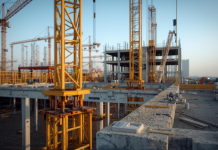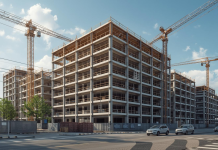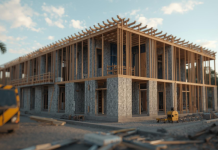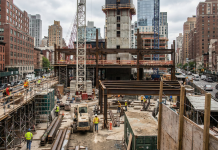Construction’s Worker Crisis Just Hit Critical Mass
Construction projects across America are facing the same problem: not enough workers to do the job.
The Numbers Don’t Lie
The construction industry must attract 439,000 workers in 2025 alone just to meet demand. That’s not growth targets. That’s survival math.
41% of the construction workforce will retire by 2031. They’re not just leaving jobs. They’re taking decades of specialized knowledge with them. The replacement rate tells the real story: only two new workers enter for every five who retire.
Look at the age breakdown. Over 20% of construction workers are over 55. Less than 3% of young people consider construction careers. By 2030, the average worker age will hit 46.8 years.
Real Costs, Real Delays
Construction delays now add 2.3 months to single-family home completion. That’s $4,000-$5,000 in extra carrying costs per house. Developers eat these costs first, then pass them to buyers through higher prices.
Massachusetts shows where this leads. 70% of laborers will retire by 2030. The state needs 220,000 new homes by then. Without more workers, it’s mathematically impossible.
The economic damage is already here. The shortage blocked construction of 19,000 single-family homes in 2024. That’s $8.143 billion in lost activity. Behind those numbers are families priced out of homeownership and communities struggling with housing shortages.
Why Higher Wages Aren’t Working
Construction workers now earn $38.30 per hour on average. That beats manufacturing wages ($34.10) and the national average ($35.10). Field craft professionals make 18% more than typical private-sector workers.
Yet the industry still can’t attract enough people.
The problem runs deeper than pay. Schools aren’t training construction workers. Vocational programs haven’t scaled with demand. Despite good wages, construction still fights perception problems.
Immigration trends make it worse. Construction gained 88,000 immigrant workers annually from 2003-2009. That dropped to 45,000 annually from 2010-2019. This happened even though foreign-born workers make up one-third of construction trades.
What Happens Next
The industry has two paths. Find systematic solutions to workforce development, or accept that slower construction becomes the new normal.
Some companies are already adapting. They’re partnering directly with high schools, offering apprenticeships with guaranteed jobs, and investing in training programs. Others are turning to technology to do more with fewer workers.
But individual efforts won’t solve a system-wide problem. The industry needs coordinated action across education, immigration policy, and workforce development.
Every delayed project makes the housing crisis worse. Every unfilled position pushes completion dates further out. The construction industry built America. Now it needs America to help build its workforce.








